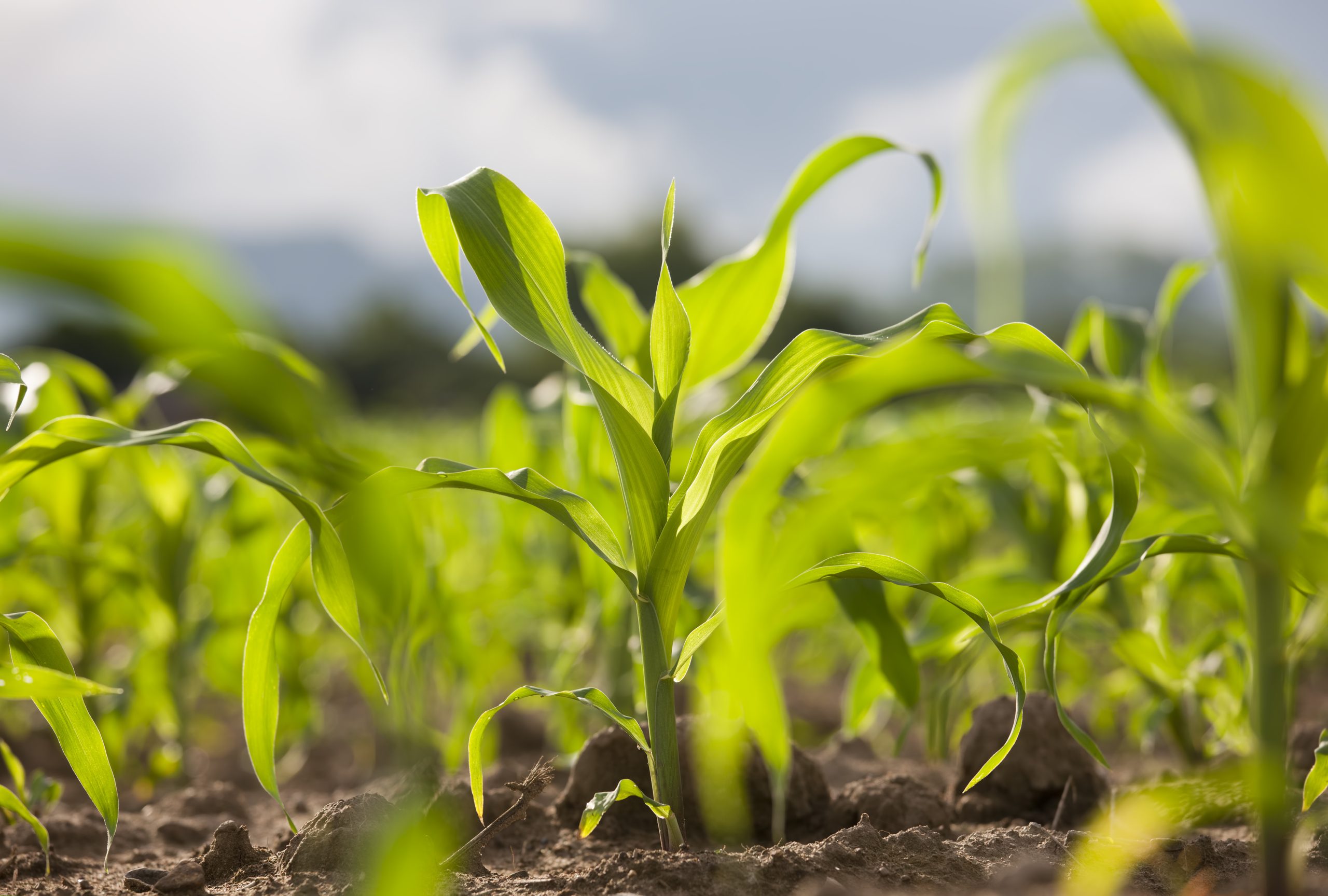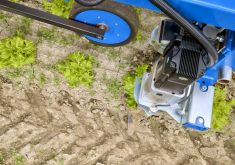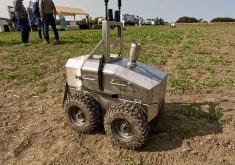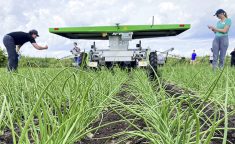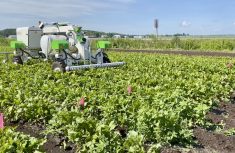Interested in building your own precision sprayer?
If the answer is yes, design plans and artificial intelligence (AI) algorithms are now freely available from the University of Sydney’s Precision Weed Control Lab, a research group developing site-specific weed control strategies.
2020 and 2021 saw the release and promotion of an open-source tool – or more specifically, a series of free-to-access tools and instructions under the university’s OpenWeedLocator (OWL) project.
Read Also
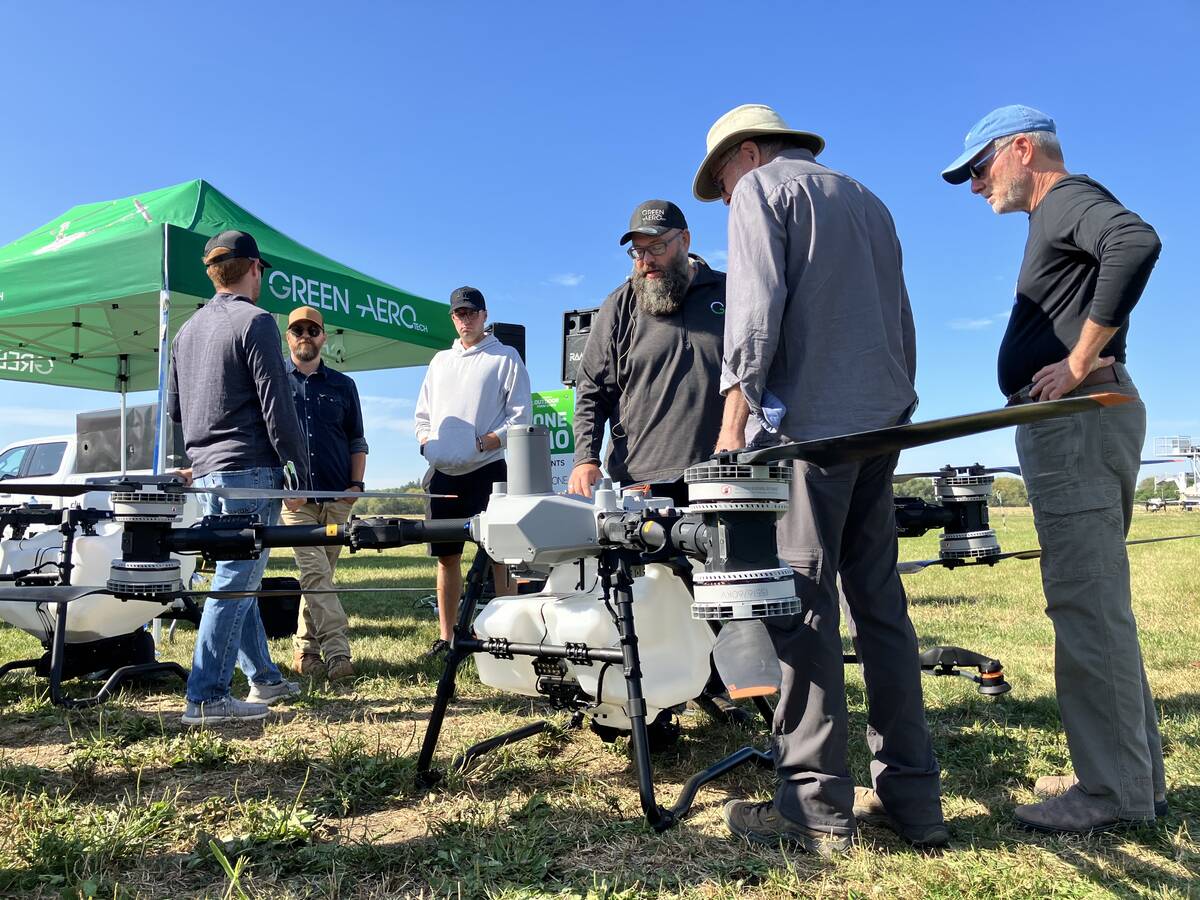
New DJI Agras T100 spray drone doubles carrying capacity
Green Aero Tech demonstrates the DJI Agras T100, a 100-litre capacity spray drone, at Canada’s Outdoor Farm Show 2025 in Woodstock, Ontario.
Why it matters: Rather than a pay-for-play approach, open-access algorithms and design instructions allow growers and applicators to develop their own working spray robots. OWL is another example of a more widespread push for free-to-access agricultural technology.
As described in a paper discussing the project’s purpose and analyzing trial results, researchers say the use of a fallow field phase is an important tool for maximizing yield potential in moisture limited environments in Australia. These fields must be kept as weed free as possible, translating to significant costs for growers. Image-based weed detection technology instead of full field coverage is thus an opportunity to improve efficiency and profitability.
“OWL is an open-source, low-cost image-based approach for fallow weed detection that improves accessibility to this technology for the weed control community. A comprehensive repository, containing all code and assembly instructions, has been developed that will allow for community driven improvement over time,” the paper says.
A further research paper abstract adds the OWL solution is based “entirely on off-the-shelf componentry, very simple green-detection algorithms and entirely 3D printable parts… On the weed detection front, a range of algorithms have been provided, each with advantages and disadvantages for your use case.”
In total, four different colour-based weed detection algorithms were tested with the OWL system over seven fallow field scenarios, under varying light, soil and stubble conditions.

Across all scenarios, each algorithm was similarly effective in detecting fallow weeds, with average precision and recall rates of 79 per cent and 52 per cent being documented. In individual cross segments, precision and recall values of up to 92 per cent and 74 per cent were found.
The researchers say OWL “represents an opportunity to redefine the approach to weed detection by enabling community-driven technology development and implementation in the weed control industry.”
A push for open-access tools
Though OWL was designed to help growers more efficiently keep bare soils weed free, a wider discussion on the role of open-access data has been ongoing within agriculture for some time.
Similarly, proprietary and segmented systems have long been cited as a barrier to more widespread adoption of automated and precision technologies on farms worldwide.
Many groups have pushed for more open-access platforms and data, including those at Massachusetts Institute of Technology and the University of Guelph, as well as organizations including Ontario Agri-Food Technologies. Raspberry PI, a United Kingdom-based charity focused on democratizing computing technology, is another, and the one behind the computers used in OWL.

